For more features, click here.
Guitar Legends: David Gilmour, master of sonic sorcery, effects and the skyscraping guitar solo
Spilling the Pink Floyd legend’s saucerful of secrets.

Image: Jorgen Angel / Redferns
When David Gilmour’s ‘Black Strat’ became the world’s most expensive guitar in 2019 – auctioned for $3.975 million and recently beaten by Kurt Cobain’s Martin – your average non-playing layperson must have wondered just one thing: why? Is it made of unicorn horns? Is it a complete one-off that is impossible to replicate? Is its original owner long-departed, and the guitar a final artefact of a mysterious life? The answer to all is a resounding no. But Gilmour’s Black Strat has undoubtedly entered folklore, just for what it’s appeared on.
- READ MORE: Guitar Legends – Jimmy Page, the father of hard rock who was more than ‘just’ a guitar player
From Pink Floyd’s Atom Heart Mother (1970) to final album The Endless River (2014), the Black Strat was the bedrock of Gilmour’s sound on a slew of recordings that still cause folk of a certain age to ‘lose their shit’. And its new owner Jim Irsay, billionaire CEO of the NFL’s Indianapolis Colts, is one such man.
It’s not really known how well 60-year-old Irsay plays guitar, but he has form as a buyer. As a collector, he also has guitars once owned by Elvis Presley and John Lennon. In 2019, he also stumped up $175,000 on the Floyd–branded flight case that housed the Black Strat for years, and $1.095 million for the 1969 Martin D-35 Gilmour used to record Wish You Were Here. (It was all for Gilmour’s chosen charity ClientEarth, by the way. And Jim Irsay says he plans a museum of his artefacts at some point.)
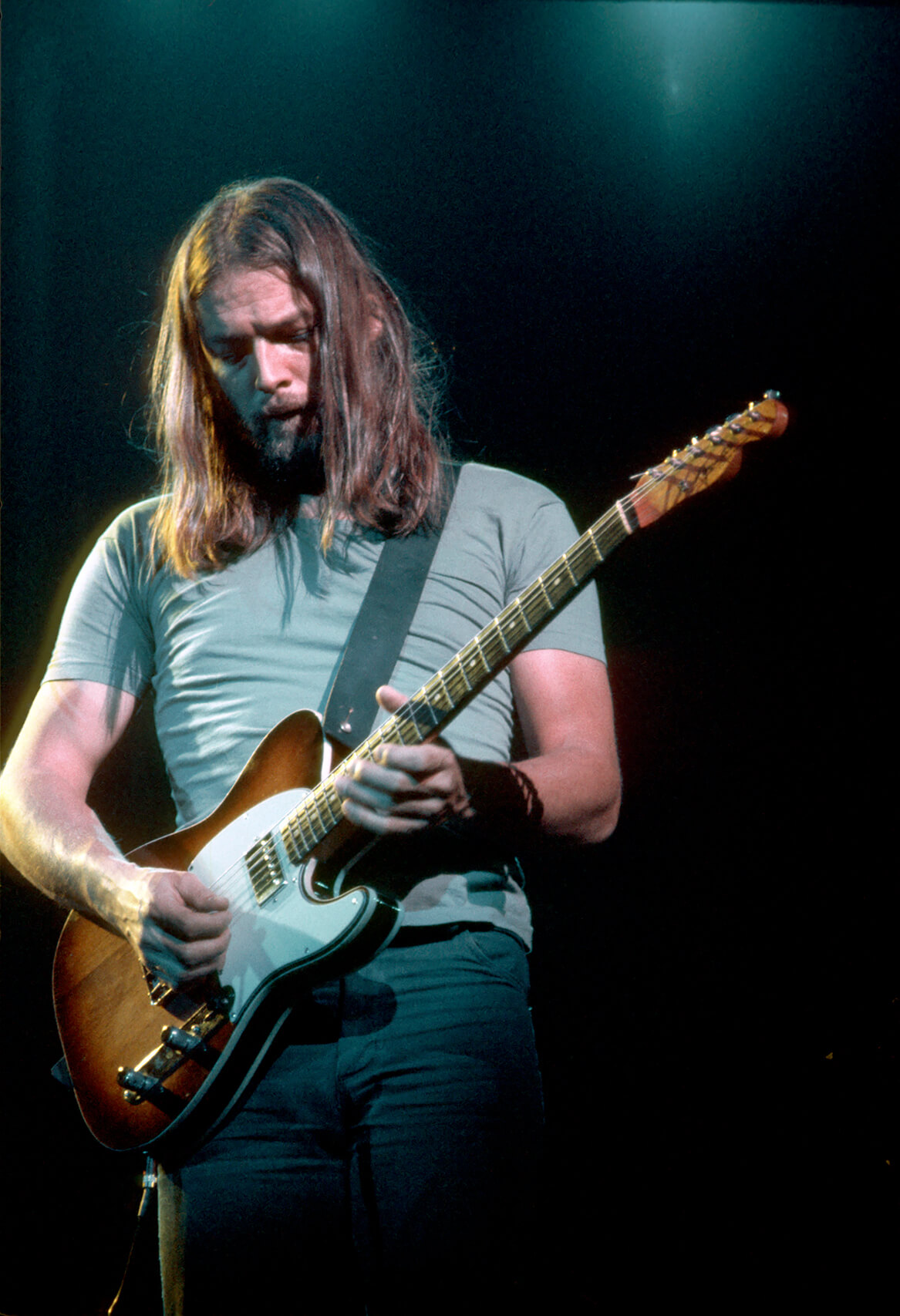
Such are the ‘buying a dream’ ways of superfans, but none of which is going to guarantee that Irsay instantly sounds like Gilmour. We know this: so does he! After all, the guitar itself is only one piece in the Gilmour sonic jigsaw.
“It was really off-kilter. I was like, wow. Why on Earth and how on Earth?” Irsay says of the spiralling bidding process. “But Floyd internationally is a powerful thing.” And as for playing it? The most he could offer was, “I’m definitely going to be getting some notes out of it, man.” He confesses he probably plays other guitars he owns to excess: “You shouldn’t play the King’s guitars so much.”
Even so, it all adds to the noteworthiness of the price paid for what is quite an ‘ordinary’ guitar… Still, modding and buying gear to get the Gilmour sound is almost a mini-industry within the guitar business itself, so Irsay is hardly alone. He’s just richer than the rest of us!

In David Gilmour’s own words…
“Shine On You Crazy Diamond and Wish You Were Here are standout tracks. Comfortably Numb is another one. High Hopes from The Division Bell is one of my favourite all-time Pink Floyd tracks. The Great Gig In The Sky, Echoes… there’s lot of them”: Gilmour on his own favourite Floyd songs.
“I think a guitar solo is how my emotion is most freely released, because verbal articulation isn’t my strongest communication strength. My wife thinks that I should do interviews by listening to the questions and playing the answer on guitar.”
“I don’t even think whether I play the blues or not, I just play whatever feels right at the moment. I also will use any gadget or device that I find that helps me achieve the sort of sound on the guitar that I want to get.”
Essential Gear: The Black Strat
Before 2019’s auction, David Gilmour himself admitted of the Black Strat: “You know something? For me, I can let go of it. It’s going to bring a lot of people to have a look at this sale, and it’s going to do that job. It’s a lovely guitar. It’s on so much stuff, but Fender have made replica ones that they sell, and I have two or three of those that are absolutely perfect. One of those might be my future guitar of choice or even, horror of horror, maybe I’ll even change the colour.”
That might seem sacrilege, but the Black Strat itself has been through numerous changes. Gilmour bought the Black Strat at Manny’s guitar store in New York, USA in May 1970 during Pink Floyd’s North American tour. (As fate would have it, he’d bought a similar one weeks earlier, but it was stolen along with the rest of Floyd’s rig. Where is that: the original Black Strat?)
- READ MORE: The best Stratocaster-style guitars to buy
In spec, it was quite ordinary: a Fender 69 alder body with black finish painted over the original sunburst. Yep, it’s a refin! It had a Fender late-60s maple neck (‘CBS-era’ large headstock) and 21 frets, Fender single-coil pickups and tuners, plus a standard three-ply white pickguard, a three-way pickup selector and standard Fender synchronised tremolo bridge. Gilmour first played it live at the Bath Festival in June 1970.

Over time, though, Gilmour tinkered with the spec, due to preference or simply wear and tear. The point being that, for different eras of Floyd – if you want to be totally faithful – you need different guitars.
For example, in the early 1970s, he replaced the original all-maple neck with a Fender 1963 rosewood fingerboard maple neck taken off a 1959 (body) sunburst Strat he also had. (The Black Strat’s maple neck was fitted onto his sunburst Strat.) And it’s the rosewood neck incarnation of the ‘Black Strat’ that is featured on Dark Side Of The Moon, Wish You Were Here, and Animals. Arggh!
In its final guise, the Black Strat has a 1983 ’57 reissue C-shape maple neck (7.25-inch radius fingerboard and 21 vintage style frets), Fender/Gotoh tuners, and a single-ply 11-hole pickguard. In terms of the important sonics, it has Fender neck and middle pickups dated 1971 (the whole pickguard assembly from a ’71 Strat was installed in June 1973) and a Seymour Duncan custom-wound SSL-1C bridge pickup (although that was installed as late as 1979). Even later, a five-way pickup selector replaced the original three-way (in 1985) and he also added a custom mini-toggle switch on the pickguard for neck/bridge pickup combination sounds.
So, what to do if you want your own Black Strat? The easiest way to all this is simply shell out on the Fender Custom Shop David Gilmour Stratocaster Relic. This is a precise copy – even down to sunbursting the body and then painting black over the top! Problem is, it was Limited Edition and you’ll now have to go second-hand: expect to pay £5,000.
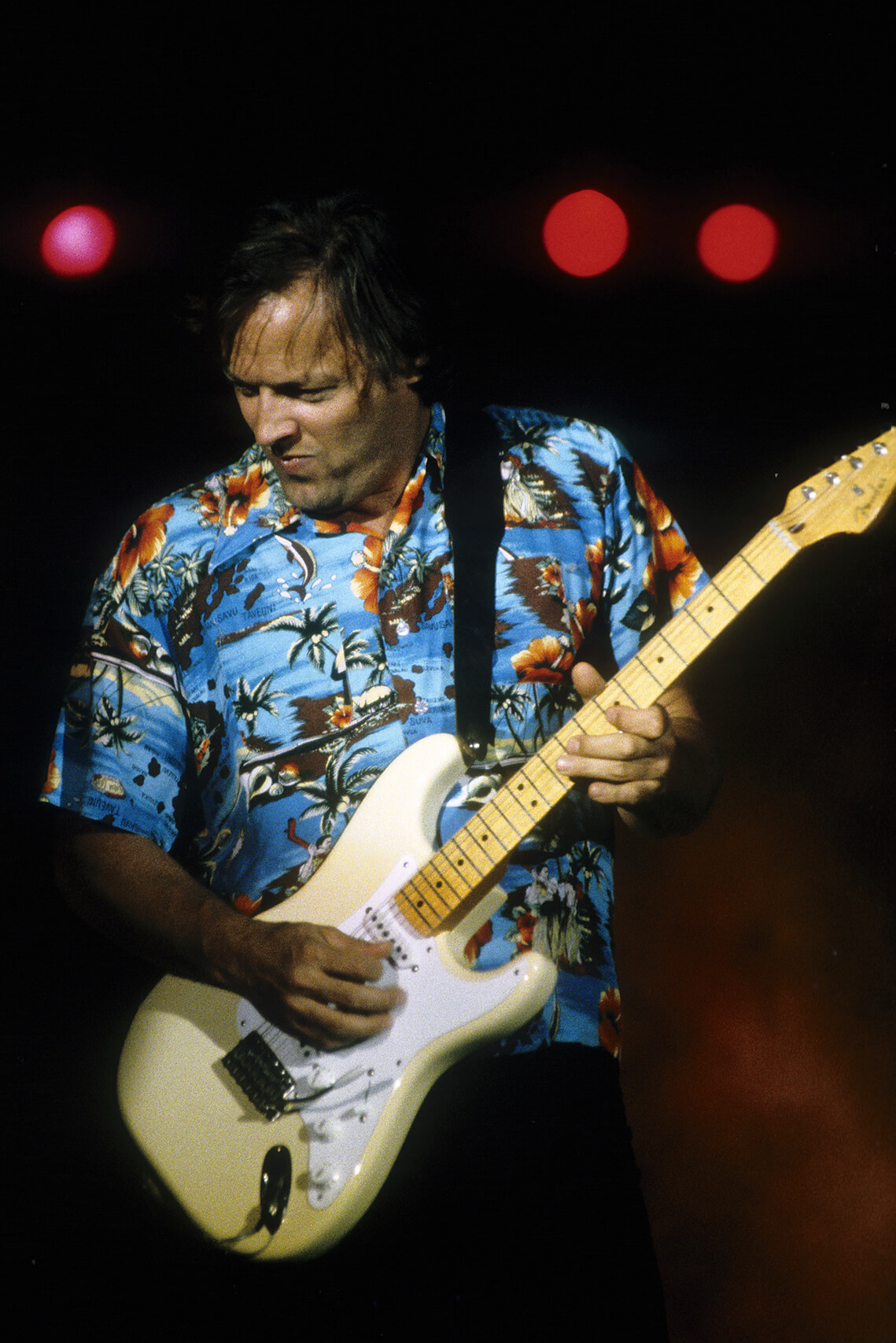
You may think that black Fender Stratocasters w/maple neck as a ‘base’ model (to modify) are common, but not overly so. You have a few choices, new. A good choice is the Mexican-made Fender Player Stratocaster: although you here get 22 frets and a 9.5-inch radius fingerboard, these are often very personal choices anyway. You do get the now-standard five-way switch. Street price is under £600.
The Fender American Performer HSS Strat comes with a black guard, but that humbucker at the bridge… You’ll have to ‘reverse engineer’ that upgrade and thus replace the pickguard anyway, and you’ll already have spent circa £1,000. Plus, it has a large headstock – as on Gilmour’s early incarnation of his ‘Black Strat’, but not so now. Close, but no cigar.
A good bargain choice is actually a Squier version – specifically the Squier FSR Classic Vibe ’50s Stratocaster, which is very ‘Black Strat’ in looks and close enough spec-wise. You really just have to tackle the pickups and vib arm. (Whisper it: you can always invest in a genuine ‘Fender’ neck). But for around £350, it’s a great starting place.
In reality, the cosmetic look for your own ‘Black Strat’ might be half your journey. A genuine Fender single-ply guard in black will cost around £35, although there are plenty of cheaper copies. Be warned: make sure you match the screw hole number on new and old guard! You don’t want to be trying to fit an 11-screw pickguard to an eight-hole body. (Note that ‘50s vintage models have eight-screw-pickguards; the advantage of the Squier is that the guard is already black so it doesn’t need replacing.)
A shortened vibrato arm can be found for around $30 or £40: note that a standard length is six inches: Gilmour uses the smallest 4.25-inch spec (you can also get 5.25-inch). Only the shortest will look right but, again, this may be a matter of choice – you may find the much shorter arm simply strange to play. Again, make sure your new arm matches the bridge on your base Strat.
The custom single-coil at the bridge on the ‘Back Strat’ seems key. Gilmour wanted something hotter-sounding than the original vintage Fender, but not as fundamentally different as a humbucker. The custom-wound SSL-11C was the result, but Seymour Duncan’s Evan Skopp explained that the SSL-5 model (circa £60 street price) is just the same: “When the so-called SSL-1C, which was a one-off designed for Mr. Gilmour, eventually went into production, it became the SSL-5 Custom. The SSL-5 you buy today is essentially the same pickup as the SSL-1C that Phil Taylor [guitar tech for Gilmour] ordered from Seymour and which went into the Black Strat.
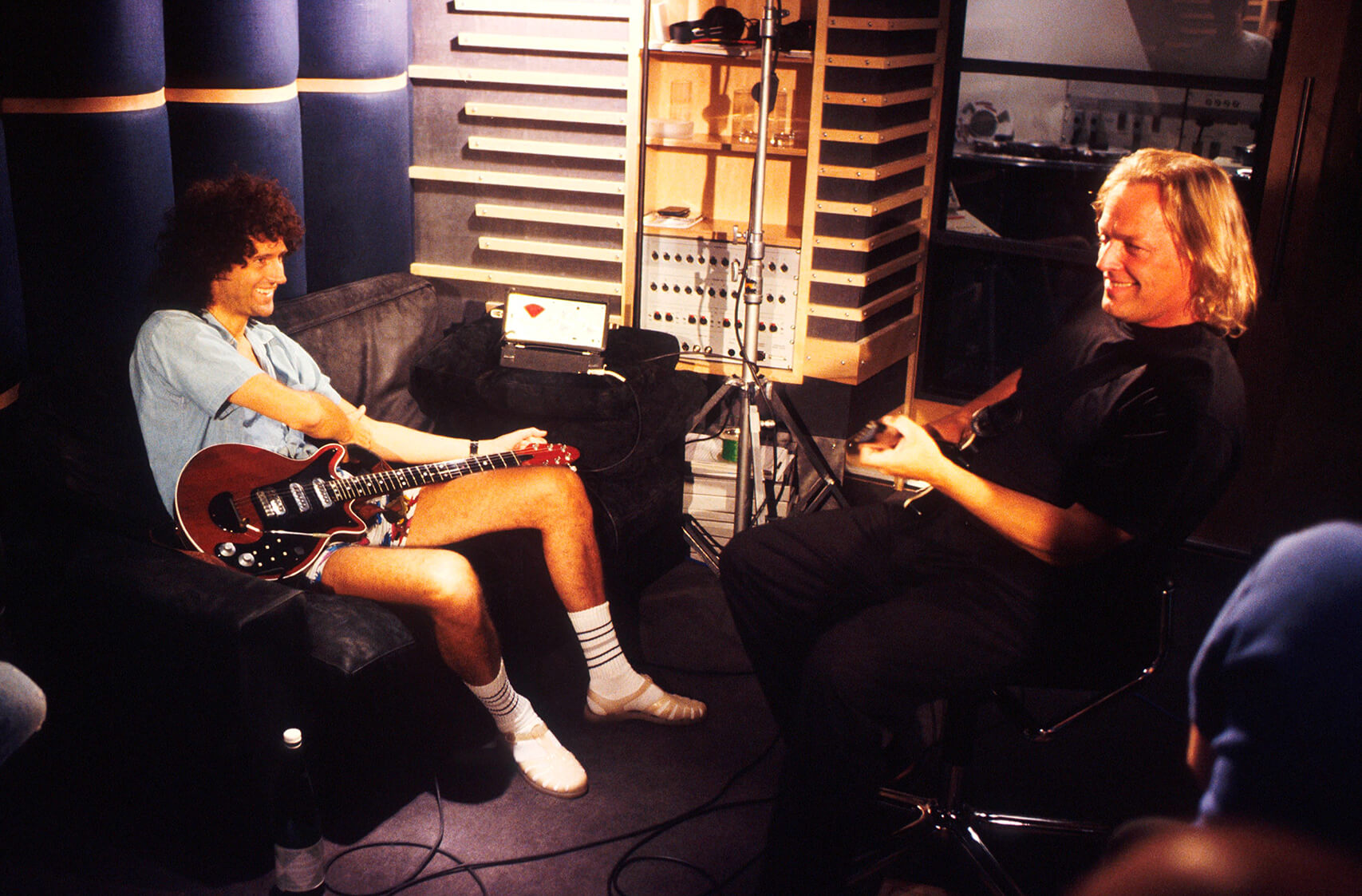
“For Fender’s DG Black Strat reissue and as a tribute to this bit of guitar history, we stamp ‘SSL-1C’ into the bottom flatwork of the SSL-5s that are installed in the bridge position of that guitar.”
The pickup has stronger magnets and is more aggressive than a standard Fender single coil, but cleans up nicely to produce a mellower sound with the volume pot rolled off slightly on a Stratocaster.
Of course, you may actually want a little more of a different tone to DG – check out our guide on the best Stratocaster bridge pickups and neck pickups if you’re looking an upgrade.
All too complicated? We can’t vouch for them personally, but OverDrive Custom Guitar Works (in the USA, at stratcat.biz) do a whole range of Gilmour-esque mod packages, including fully-spec’d pickup-fitted black guards. Check the extra cost of international shipment if you’re outside the USA.
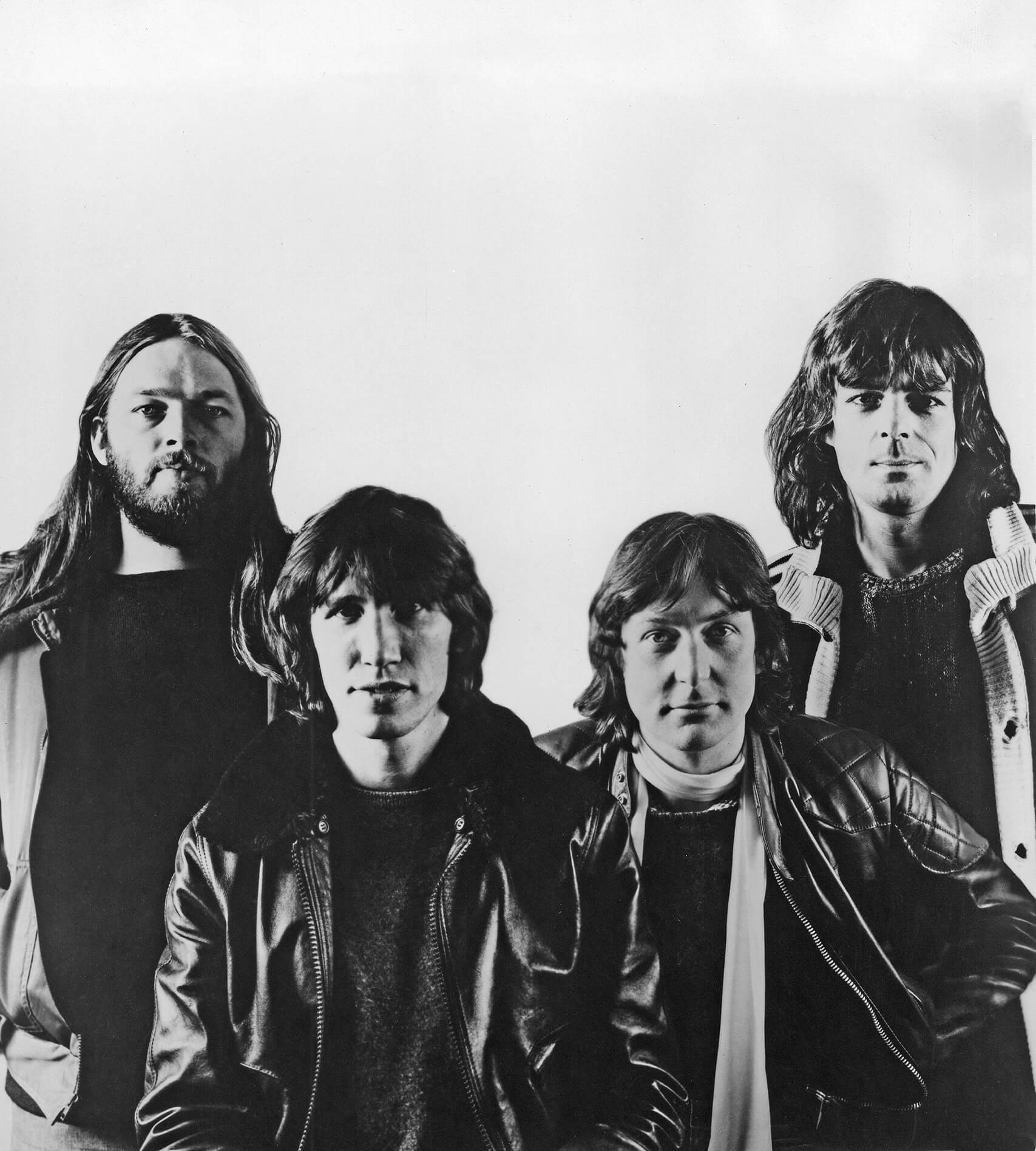
And, of course, we’re duty-bound to recommend you use a pro guitar tech for any mods – we don’t know how expert (or otherwise) you are. These are routes you can take if you want to slavishly try and replicate the Black Strat vibe: we’re not saying this is a good or bad thing, but it’s something that many players clearly want to do.
The irony of the $3.975 million Jim Isray paid for the ‘original’ Black Strat? Some reckon the only thing ‘original’ on the guitar is actually the bridgeplate! The rest is just bits put together over years.
Take some time out for a bit to watch David talking about the guitars he auctioned.
The Red Strat
Seasoned Gilmour watchers will of course know that in the 1980s and 1990s, he more often used a red Strat. While he semi-retired the Black Strat (it was in the Hard Cafe in Texas from 1986 to late 1990s) he used a trio of ’57 reissue Strats he bought in 1984 – in red, white and sunburst, the former being the most famous.
When he played with Bryan Ferry at Live Aid (1985), Gilmour began with the sunburst but it failed first song! He strapped on the red for the reminder of the short set and it became his main guitar onwards until Live 8. (Note that David actually rehearsed Pink Floyd’s set at Live 8 [2005] with the Red Strat. At his tech Phil Taylor’s suggestion, the Black Strat made an 11th-hour return for the actual historic performance.)
All three guitars had his favoured-shortened vibrato arms fitted, as well as EMG SA pickups. EMG’s SAs are very similar to early Fender pickups, the 60s era in particular, with a tad more midrange and compression due to the slightly higher output. You can hear the slight difference in Gilmour’s sound on Pink Floyd’s A Momentary Lapse Of Reason and the live album Pulse. The EMG SA Set (three single coils ready-mounted on a guard with controls, with Gilmour’s blessing) is around £265.
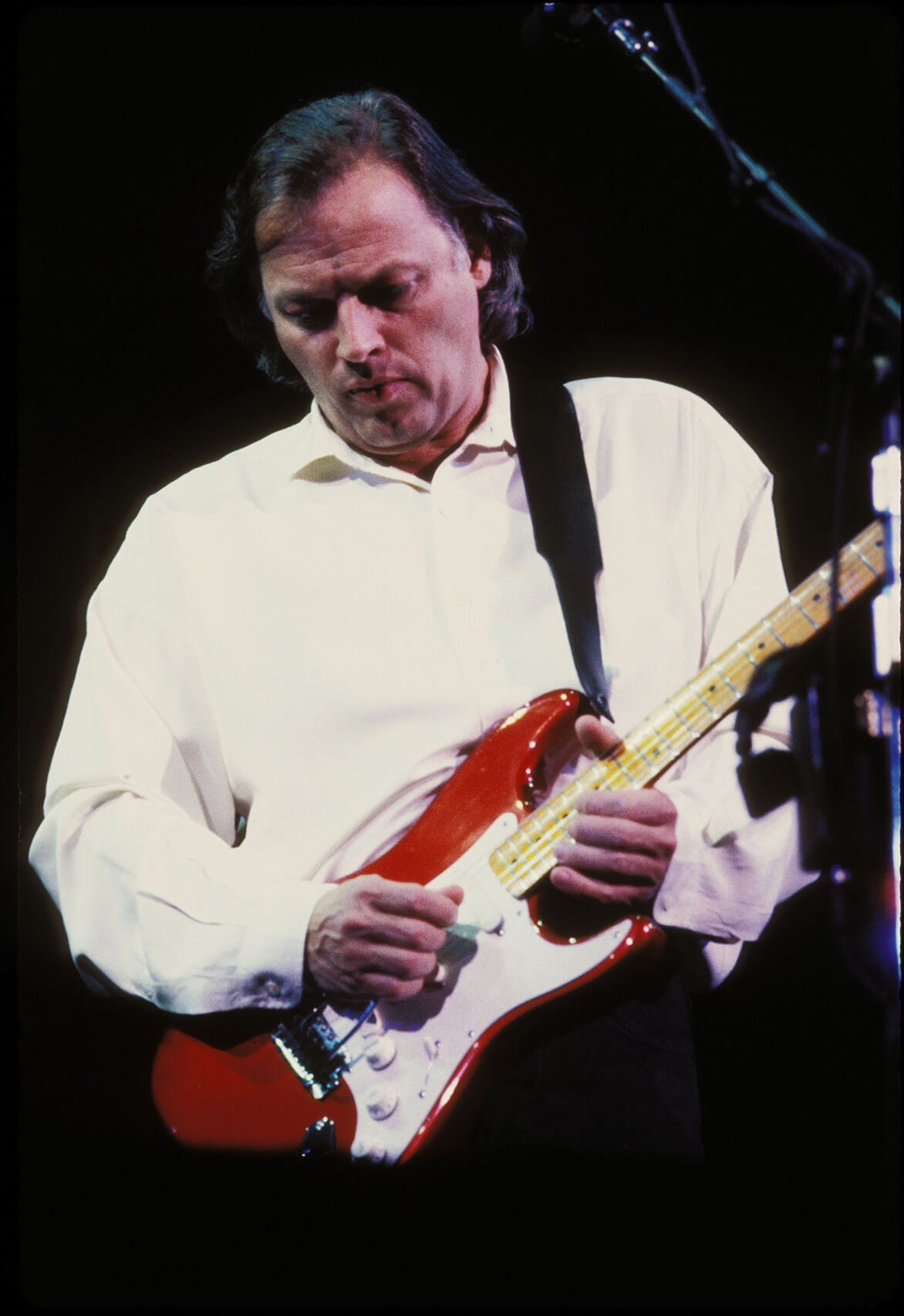
Elsewhere, Gilmour famously had a 1950s white Strat serial number 001 (not necessarily the first ever made) that he used for the rhythm on Another Brick In The Wall Part 2 and at Fender’s ‘Strat Pack’ 50th Anniversary concert. The outro solo for Another Brick… was on a 1955 Gibson Les Paul Goldtop with PAFs (he also owns a near-identical 1956 with Bigsby – hear that on the first solo in On An Island).
And then there was his Martin D-35. For all the fame of his Black Strat, when Gilmour appeared on the BBC’s Desert Island Discs in 2003, he said the Martin would be his “luxury item.”
“It’s the best guitar I own. It’s the guitar that’s always by my side. I’ve written just about every piece of music using that guitar. My ideas come through that guitar.”
Somewhat bizarrely, Gilmour apparently bought it while on his way to Manny’s in NYC one day. A man was hawking it in the street, DG had a quick strum and bought it on the spot. Does that ever happened to you, huh?
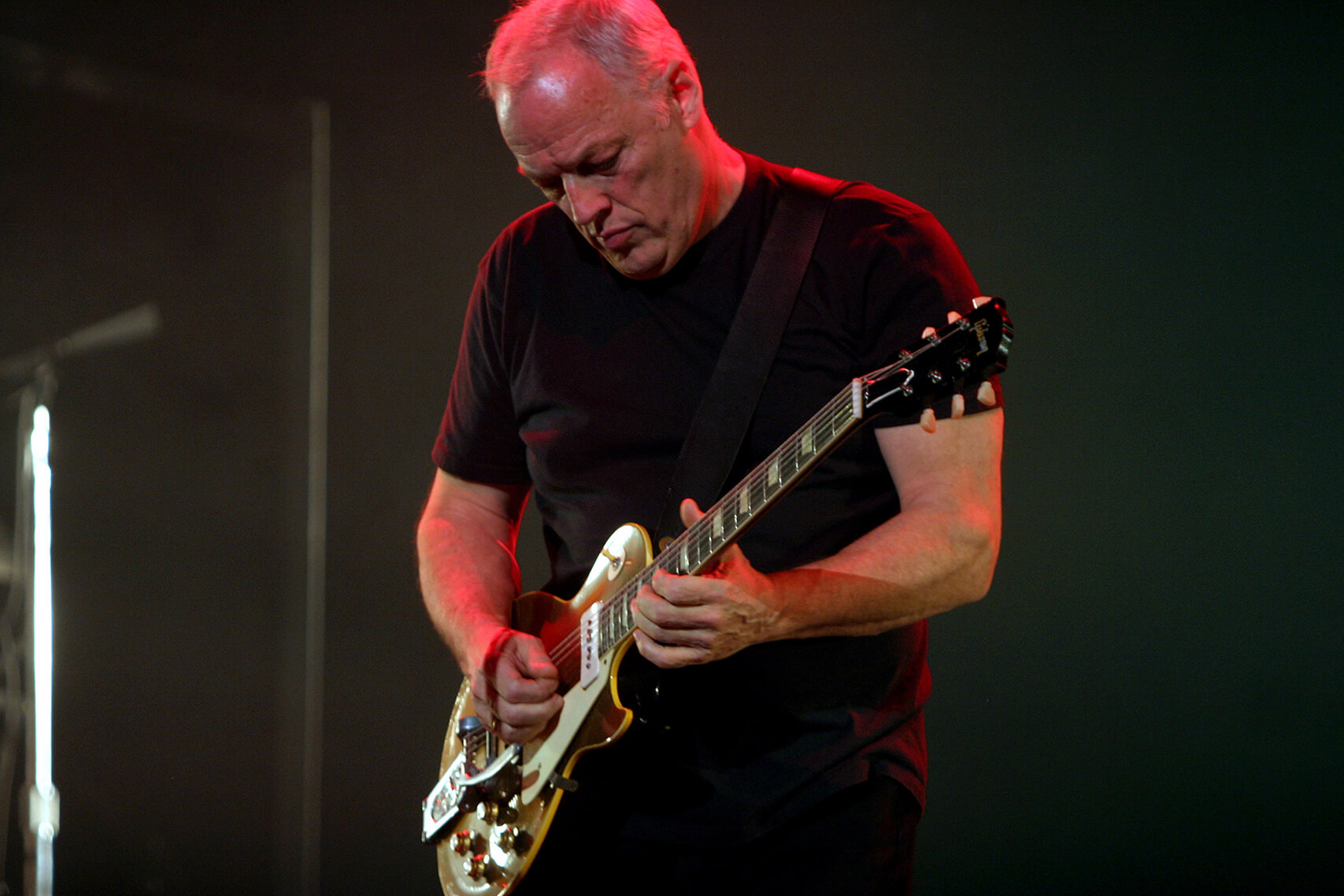
Amps
When it comes to backline, Gilmour has always veered towards classic Hiwatts and WEM cabs. Although not as world-famous as fellow UK makes Marshall, Vox and Orange, Hiwatts have a classic ‘British’ sound. That said, Gilmour has also occasionally also used US-made Mesa/Boogies. For Floyd’s large gigs, his backline could involve to up to six Hiwatt DR103 100-watt heads – not the sort of set-up you’ll need! But if the brand is all-important to you, Hiwatt offer a range of smaller heads from the 20W/0.5W ‘Little Rig’ head to the T40/20C 2×12-inch combo, although they are very expensive. Don’t even start browsing unless you have £2,000 upwards.
- READ MORE: The best tube amplifiers to buy
An option is the new Harry Joyce stack set by Rawson Sparfield. Not exactly cheap either, but it promises to ape the tone of Gilmour’s classic live rig and is still 100-watts strong.
The semi-legendary tribute act, the Australian Pink Floyd – who were invited to play Gilmour’s own 50th birthday party! – have been seen with the Harry Joyce stacks, and also actually use genuine Hiwatts, as well as silverface Fenders Dual Showmans. Again, even such a ‘tribute’ rig could cost a fortune.

Impressive smaller tube amps and even modelling combos are everywhere these days, though, if you are heading down a Gilmourish road you’ll need one that also handles the plugging-in of plenty of FX.
Trust your ears, as ever, but a few impressive models with class A tone are the Laney Lionhearts (they’re sub-£1,000, at least) or even Laney Cub range for small rooms. Orange’s TremLord 30 has plenty of headroom for those all-valve Gilmour-style crystalline tones, and anecdotal evidence even suggests that the Boss Katana modelling combos are a great start for DG-alike sounds: with their switching versatility, they really do cram the feel of a bigger rig into a more manageable box. The Blackstar Silverline Standard is another digital modelling amp with impressively spacial sounds.
It’s all down to personal choice really, but we’d suggest you avoid the heavier distorted tones of Marshall, H&K, some other Laneys (don’t confuse Lionhearts with IRONhearts!). Likewise, the super bright tones of Vox and most Fender amps won’t necessarily fit either.
Gilmour’s ‘core’ sound is actually quite clean, only on the verge of breaking up, with the boost and distortion tones for solos tending to come from pedals. Speaking of which…
Effects
You’ll know the drill by now. There is no such thing as the David Gilmour sound ‘in a box’. For years, he’s relied on custom Pete Cornish-built pedalboards: numerous versions and with the circuits of numerous pedals switched in and out at various times, including Cornish’s own FX. Cornish also builds systems for the likes of Sting, Jimmy Page, Paul McCartney and Iron Maiden – all we can realistically do is point you at petecornish.co.uk if you have the money.
But there are certainly key pedals in Gilmour’s sound over the years. The Dallas Fuzz Face is one, used from the late 60s to the mid-70s. The full-on Fuzz Face sound can be heard on Echoes, Money and Time, although you should note he would also roll back his guitar’s controls for a milder sound – as on the likes of Fat Old Sun and Cymballine – DG’s distortion sounds are generally smoothed out. The AnalogMan SunFace is a modern recreation of the original Dallas-Arbiters and MXR‘s Classic 108 Fuzz Mini is great too.
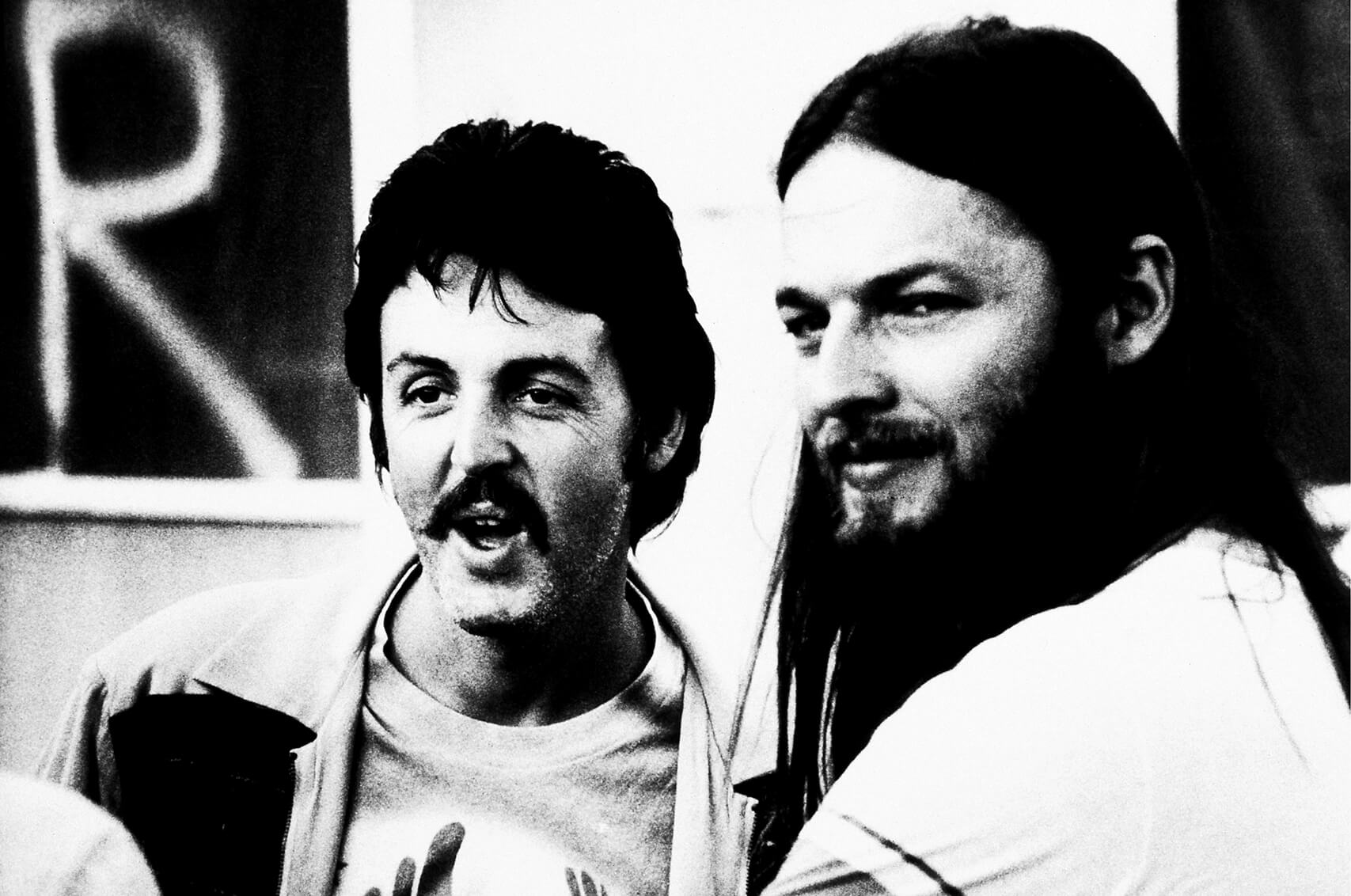
The Electro-Harmonix Big Muff is another: that’s the pedal on the (second) Comfortably Numb solo. The recently-reissued Triangle Big Muff Pi is under £100 and a fast-track to Gilmour-ized fuzz – he notably used a Sovtek Big Muff Pi in the 90s for the more aggressive tones of the post-Roger Waters Floyd. A Colorsound Power Boost and Tube Driver are other key Gilmour pedals, and he’s also used the evergreen ProCo Rat and Ibanez Tube Screamers.
- READ MORE: The best overdrive pedals to buy
Of course, overdrive and fuzz rarely stand alone with Gilmour swirling them in modulation. He’s used Uni-Vibes, MXR’s Classic Phase 90 (particularly good for Dark Side Of The Moon and Wish You Were Here era tones) and also a classic Boss CE-2 Chorus. Gilmour’s a man of good taste – it’s noticeable how many of these Top 20 Effects Of All Time he’s plugged into over the years.
For delays, the classic Pink Floyd unit was the Binson Echorec, used on Echoes, Shine On You Crazy Diamond, Time and many others. Gilmour still owns the original, but Echorecs are in the realm of vintage collectors now. But for the sound, go to the Dawner Prince Electronics Boonar, a stompbox version. It’s so faithful in sound that Gilmour has one of these, too.
In the 80s and 90s, Gilmour used TC’s classic 2290 Digital Delay. Advances in tech have allowed that sound to now be shrunk into the tiny TC Electronic Flashback 2 Mini – a truly wonderful pedal that uses TC’s Tone Print tech to make its sounds ultra-editable. It recently won a Guitar Editor’s Choice Award.
Naturally, continually adding to your stompbox arsenal is only one way of achieving multiple sounds. For starters, your amp – particularly if a digital modelling one – will already offer some DG-ish sounds. And it’d be remiss of us to ignore multi-effects units. They can be brilliant and save an awful lot of hassle. Read our latest multi-effects buyer’s guide.
Essential listening
Despite all his collaborations, it’s Pink Floyd that defined Gilmour as a player. With their drawn-out tracks and keyboard atmospherics, Gilmour’s Floyd highlights were usually interwoven into a bigger whole – he’s not known for trademark big riffs. But as a soloist and texturalist, his work still stands up 50 years after he first made his mark.
Playing style
For some David Gilmour-style voicings, look at these lessons: Chord Clinic: How To Play Chords Like Pink Floyd Part 1 and Chord Clinic: How To Play Chords Like Pink Floyd Part 2. For soloing, you’ll need to absorb all the blues licks you can also master your string bending.
